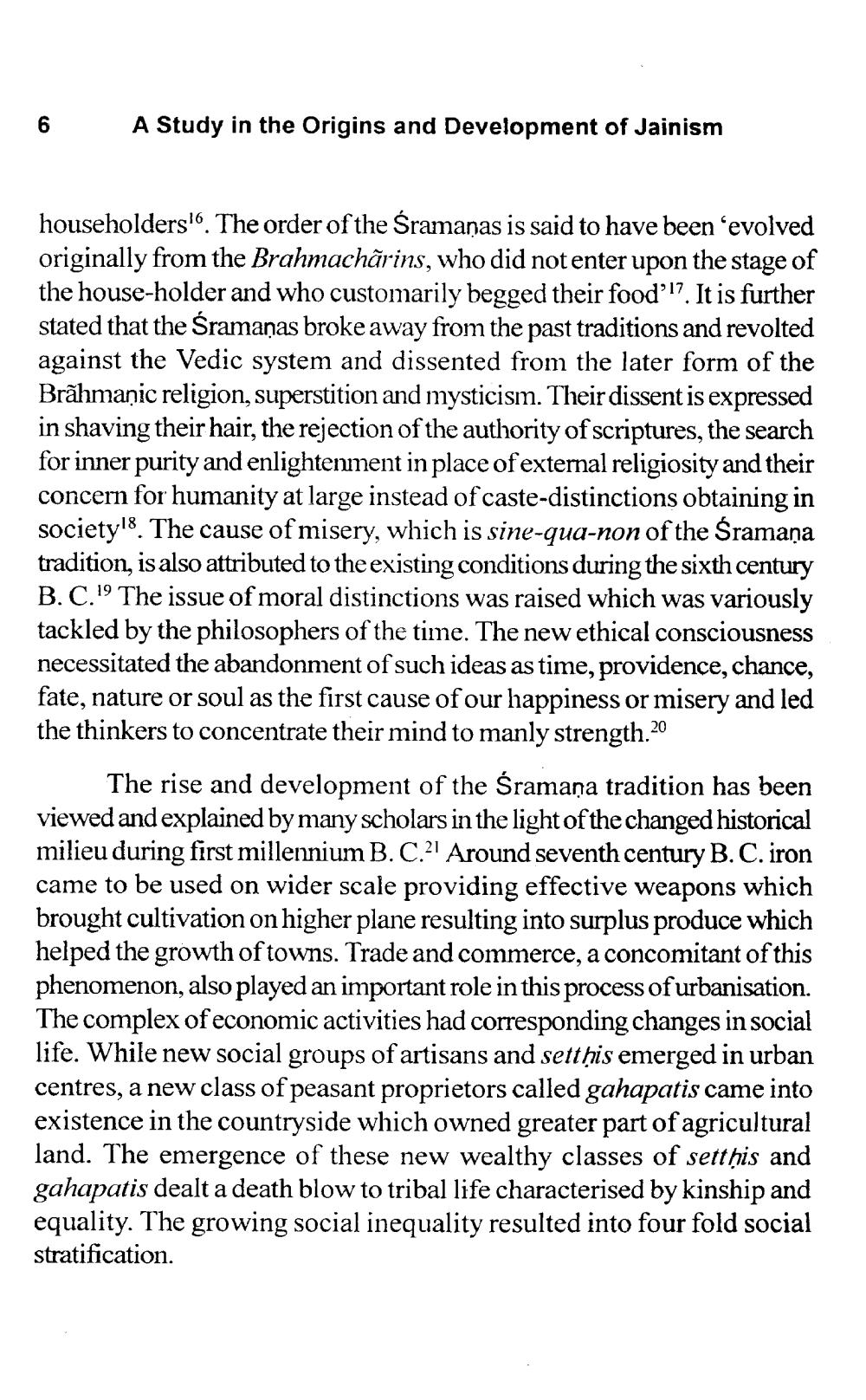________________
A Study in the Origins and Development of Jainism
householders'6. The order of the Śramaņas is said to have been 'evolved originally from the Brahmachârins, who did not enter upon the stage of the house-holder and who customarily begged their food?!7. It is further stated that the Śramaņas broke away from the past traditions and revolted against the Vedic system and dissented from the later form of the Brāhmaṇic religion, superstition and mysticism. Their dissent is expressed in shaving their hair, the rejection of the authority of scriptures, the search for inner purity and enlightenment in place of external religiosity and their concern for humanity at large instead of caste-distinctions obtaining in society18. The cause of misery, which is sine-qua-non of the Śramaņa tradition, is also attributed to the existing conditions during the sixth century B.C.!The issue of moral distinctions was raised which was variously tackled by the philosophers of the time. The new ethical consciousness necessitated the abandonment of such ideas as time, providence, chance, fate, nature or soul as the first cause of our happiness or misery and led the thinkers to concentrate their mind to manly strength.20
The rise and development of the Śramaņa tradition has been viewed and explained by many scholars in the light of the changed historical milieu during first millennium B.C.2 Around seventh century B.C. iron came to be used on wider scale providing effective weapons which brought cultivation on higher plane resulting into surplus produce which helped the growth of towns. Trade and commerce, a concomitant of this phenomenon, also played an important role in this process of urbanisation. The complex of economic activities had corresponding changes in social life. While new social groups of artisans and settis emerged in urban centres, a new class of peasant proprietors called gahapatis came into existence in the countryside which owned greater part of agricultural land. The emergence of these new wealthy classes of setthis and gahapatis dealt a death blow to tribal life characterised by kinship and equality. The growing social inequality resulted into four fold social stratification.




